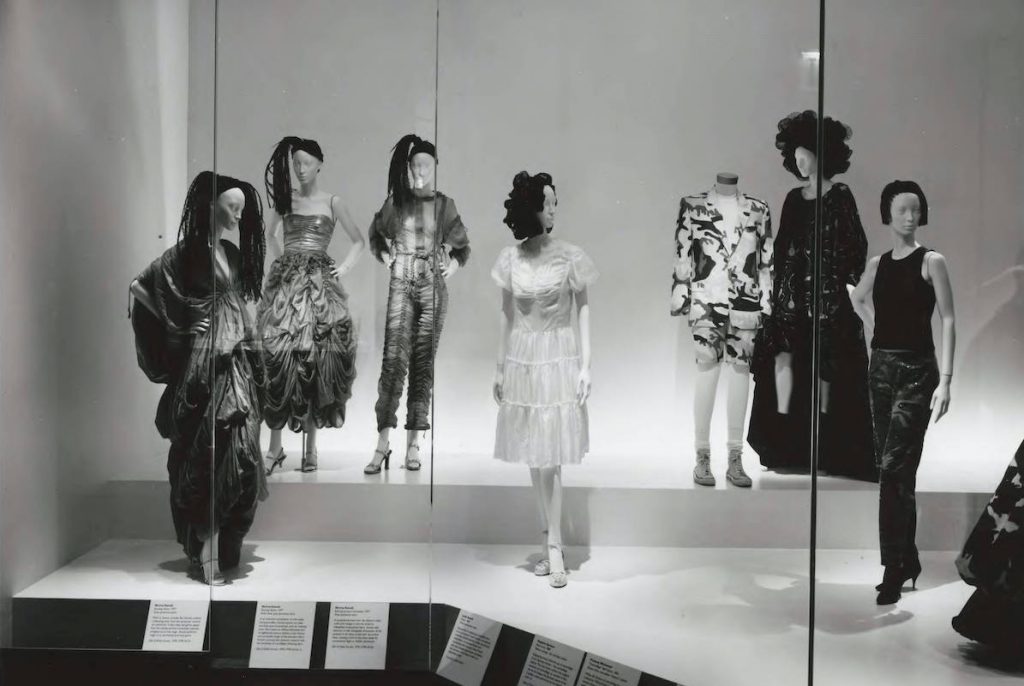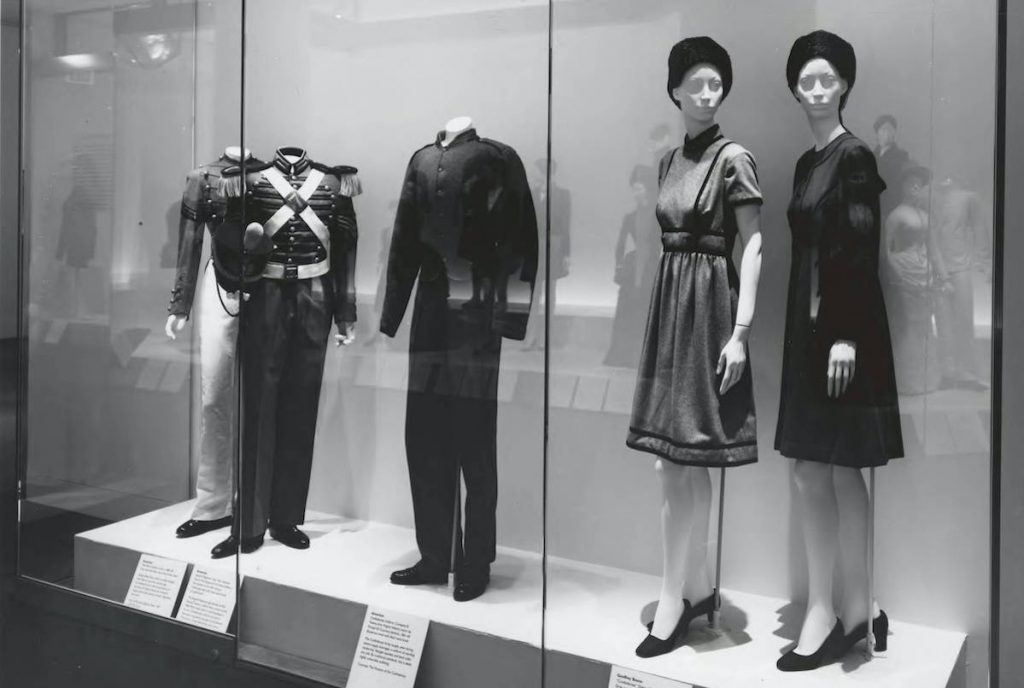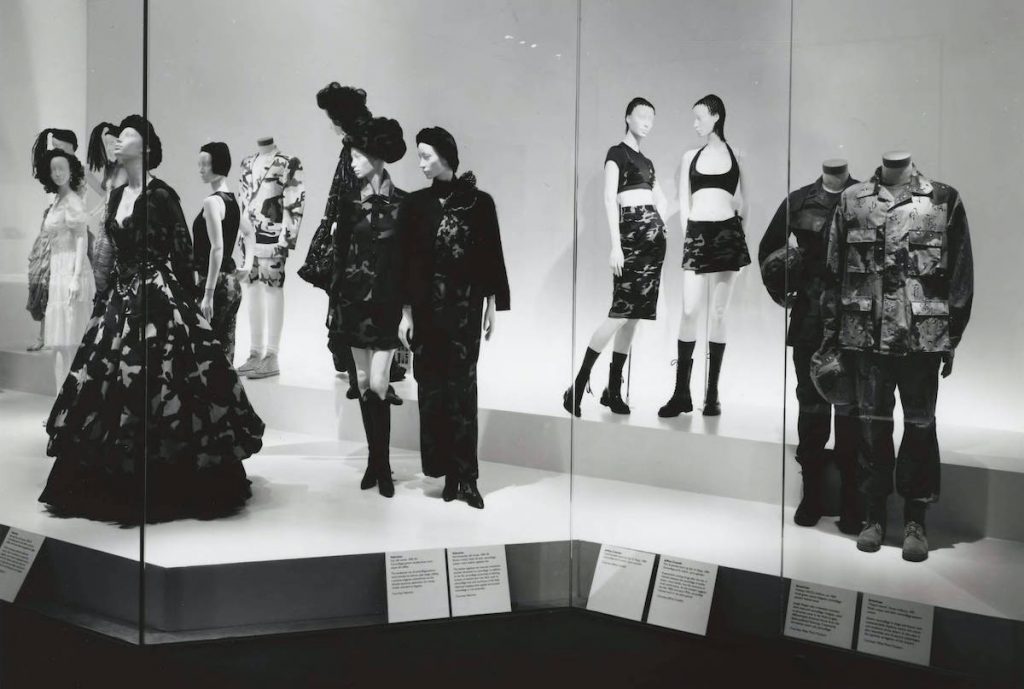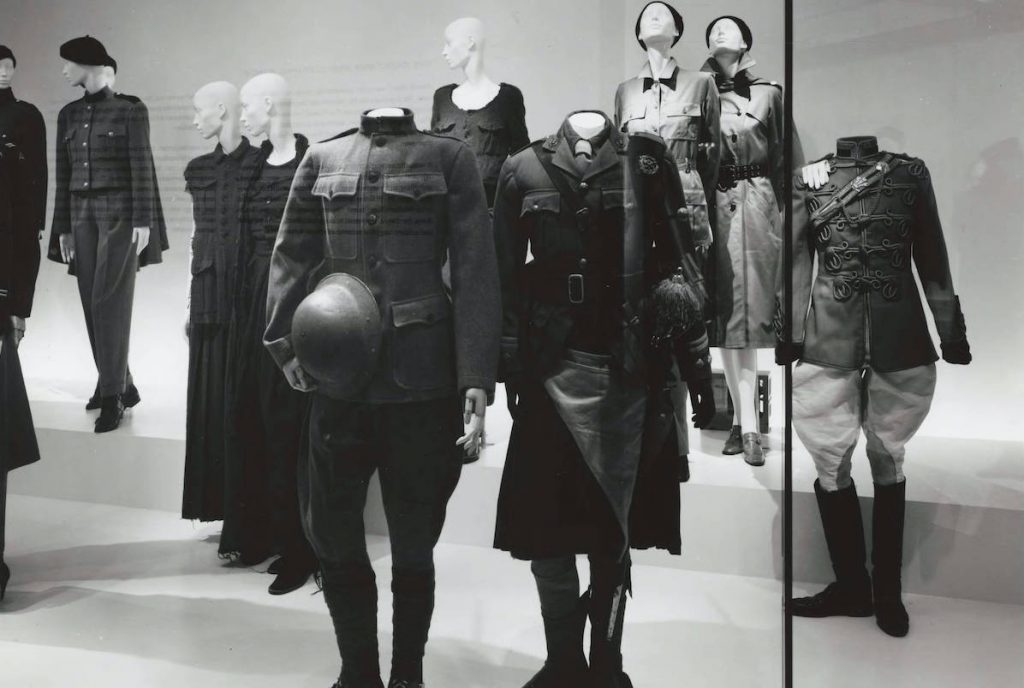Swords Into Ploughshares
Swords into Ploughshares: Military Dress and the Civilian Wardrobe, opening September 7 in The Metropolitan Museum of Art’s Costume Institute, will explore the extraordinary, pervasive, and longtime influence of the military on civilian dress for both men and women. More than 100 costumes drawn primarily from the extensive collection of The Costume Institute will demonstrate contemporary fashion’s expropriations from three centuries of military clothing around the world. As the exhibition will reveal, principal elements of modern dress have long been inspired by military attire, which often serves as a testing ground for apparel. Trenchcoats, pea jackets, aviator glasses, camouflage, sailor caps, braid, epaulets, olive drab, armor and mail, regimental tartans, khaki, and the heroic adornments of the military have all become fundamental elements of the modem wardrobe.
The exhibition ranges from the 18th century to the present, and covers diverse areas of the world. In the costumes featured, the valiant dress of Samurai warriors, military officers, Highland regiments, and the Zouave military will be invoked as a stimulus to modem dress. A legion of concepts from all branches of the military, tested by the quartermaster and proven in utility, have become standard items of modem dress for both sexes.
“We have recruited so much of the modem wardrobe from the military in tailored valor, the pragmatism of warfare, and the memory of victory that it is hard to imagine modem dress without the presence of military adaptations,” comments Curator Richard Martin. “So often, clothing represents our dreams and longings. Military dress is paradoxically both the embodiment of heroes–in Eisenhower jacket or Napoleonic tailoring–and the combat-ready usefulness of clothing, a merger of the real and epic. War yields a perverse effect in becoming a socialized and beautiful ideal for dress.”
The exhibition reveals apparel as one of the lasting disciplines of war. Diana Vreeland has said, “Uniforms are the sportswear of the 19th century.” The merging of the uniform’s impeccable tailoring, its implicit accommodation of aggressive movements, and its hierarchical pomp make service dress an inevitable source of contemporary apparel.
Swords into Ploughshares is a lesson in adaptability and re-use of culturally effective forms. The exhibition also demonstrates the transfer of clothing first determined for men into a sartorial vocabulary equally suitable for men and women. The ceremonial components of formal military dress — insignias, epaulets, stripings, braid and badges — are reinterpreted in modem dress as rich detailing derived directly from military regalia. While these elements of dress are tempered in war, they are extremely stylish in daily life.
The exhibition will include Norman Norel’s sparkling examples of nautical correctness and H.M.S. Pinafore jauntiness; Yves Saint Laurent’s pea jackets; Ralph Lauren’s World War I outfits with Sam Browne belts adapted to contemporary women’s wardrobe; Comme des Garcon’s Doughboys, who inspire womenswear; Oscar de la Renta’s interpretations of the operatic grandeur of Austro-Hungarian officers; Jean Paul Gaultier’s epic Prussian officers of Stendhalian bearing and sailors of Popeye-meets-Paul Cadmus sauciness; and Confederate gray rendered into coatdresses by Geoffrey Beene. Also featured will be Norma Kamali’s diversion of parachute materials to buoyant disco clothing; contemporary camouflage dress for evening inspired equally by Andy Warhol and Desert Storm, including ballgowns by Valentino; punk fatigues by Stephen Sprouse; medieval armor made modem and soft by Christian Francis Roth; and ancient warriors rendered pacific by such designers as Giorgio Armani, Vivienne Westwood, and Christian Lacroix.
Richard Martin, Curator of the Museum’s Costume Institute, and Harold Koda, Associate Curator, have organized the exhibition. Exhibition design is by David Harvey, Museum Exhibition Designer, with graphics by Jill Hammarberg, Museum Graphics Designer, and lighting by Zack Zanolli, Museum Lighting Designer.
There will be two lectures scheduled in conjunction with the exhibition, and the exhibition will be accompanied by an illustrated catalogue written by Richard Martin and Harold Koda.
Image provided by The Metropolitan Museum of Art, New York, Thomas J. Watson Library



